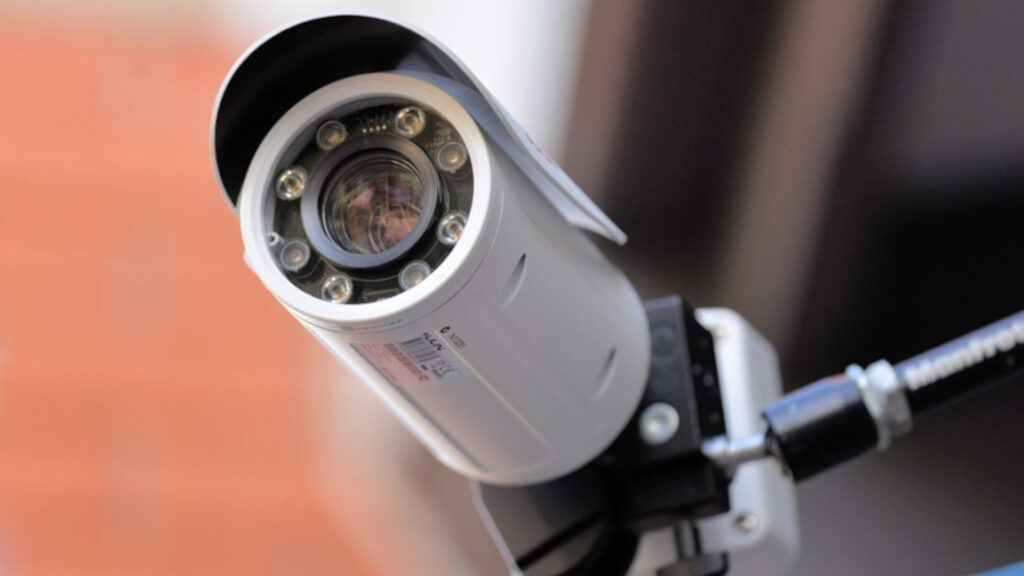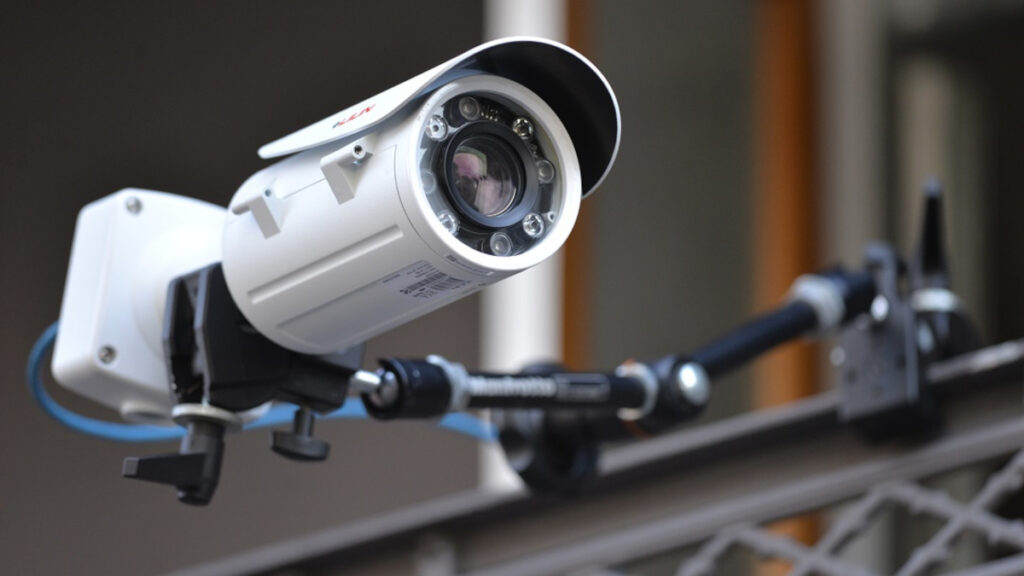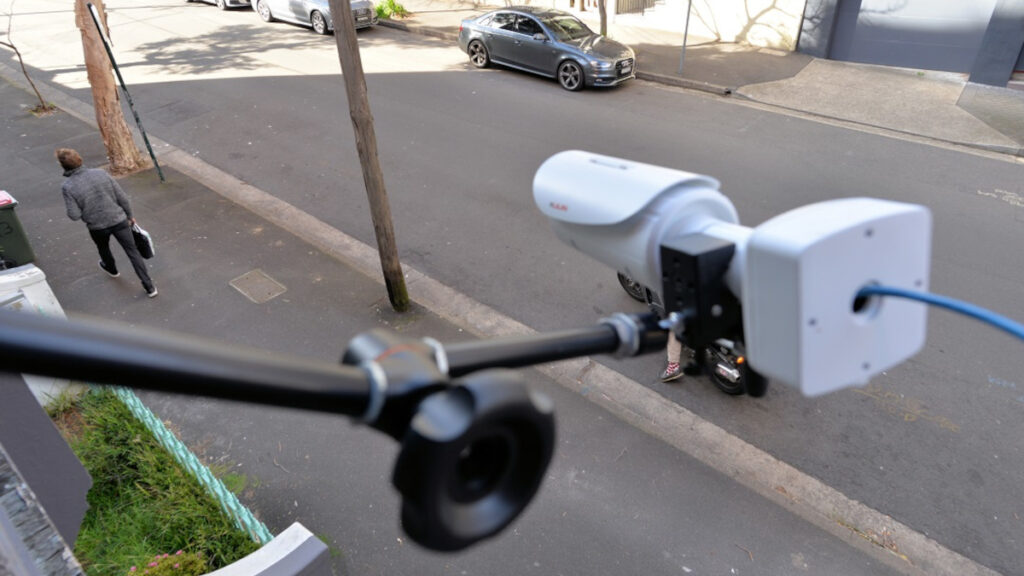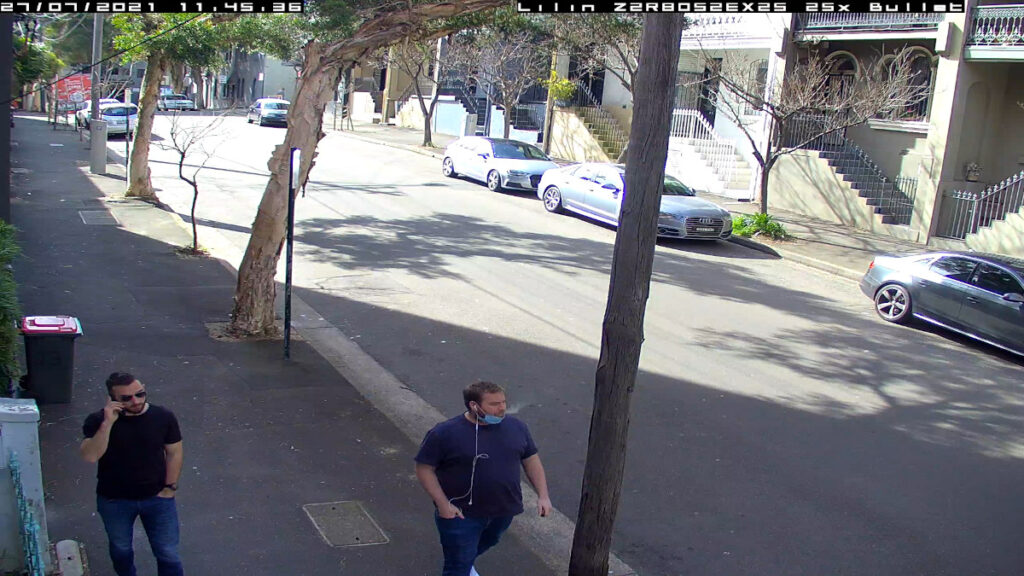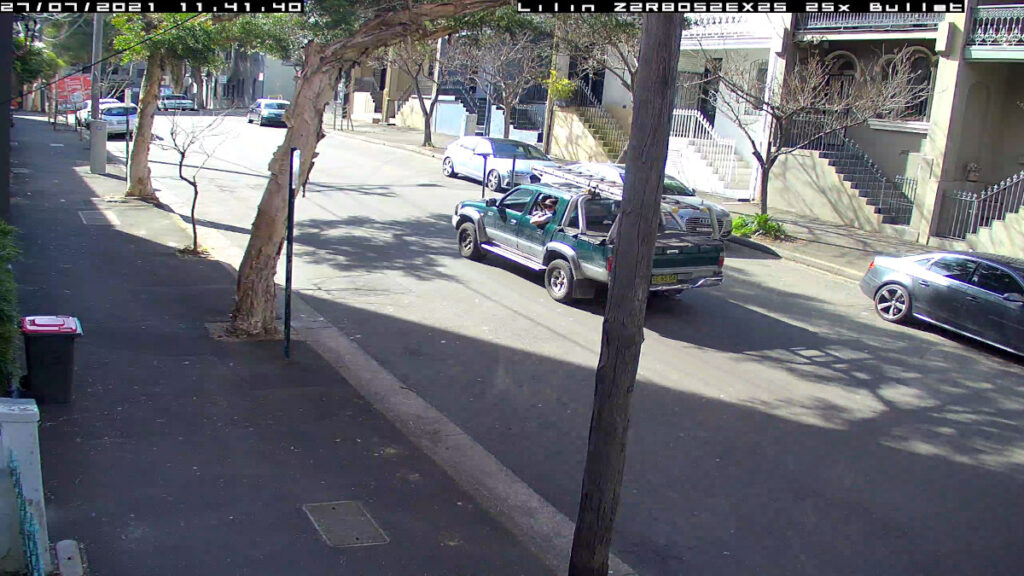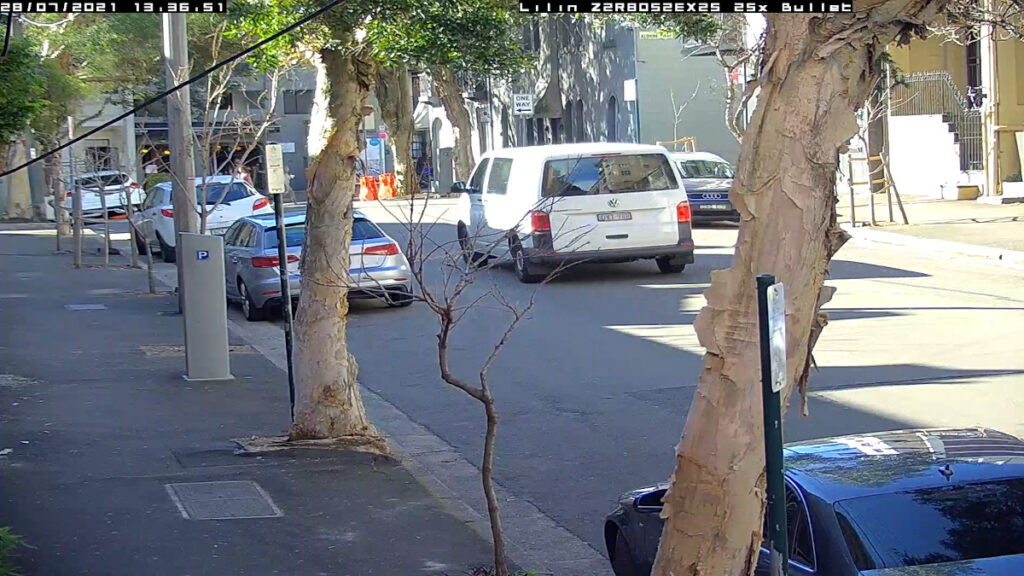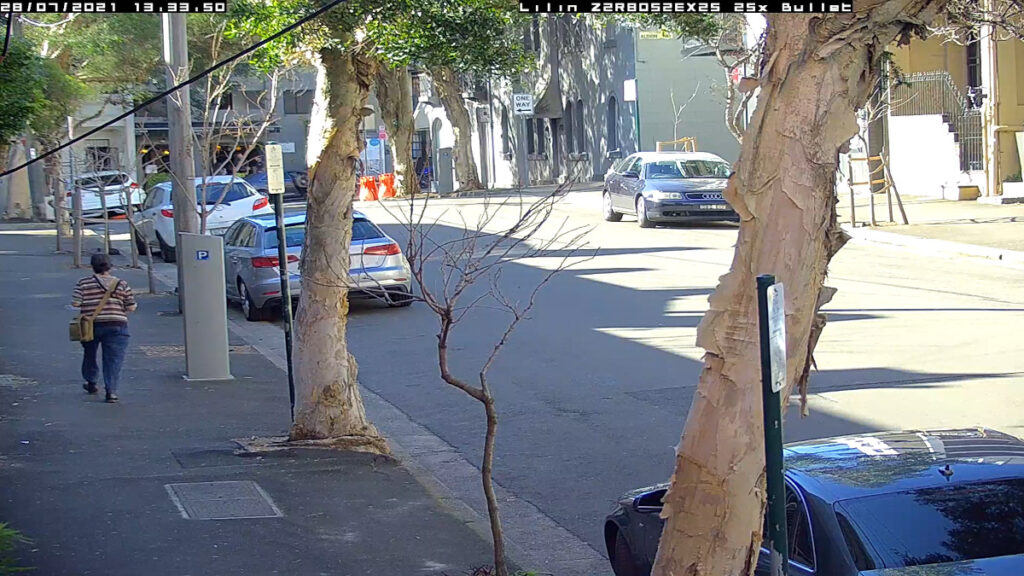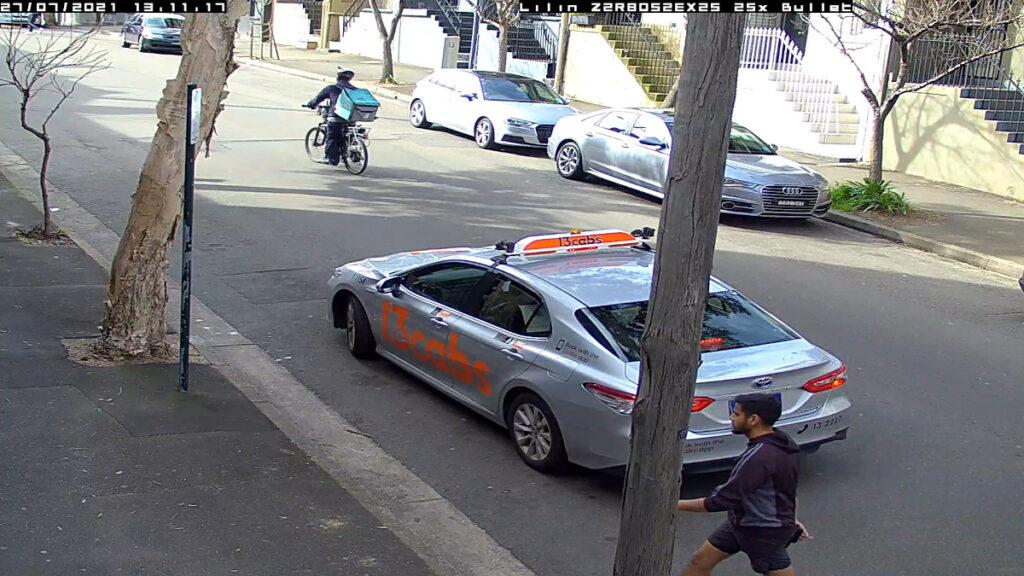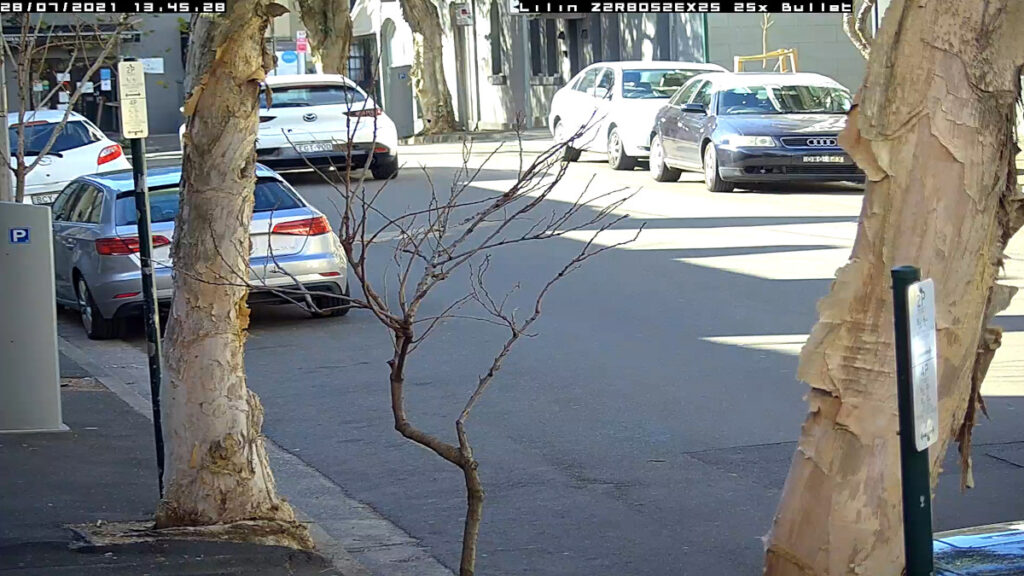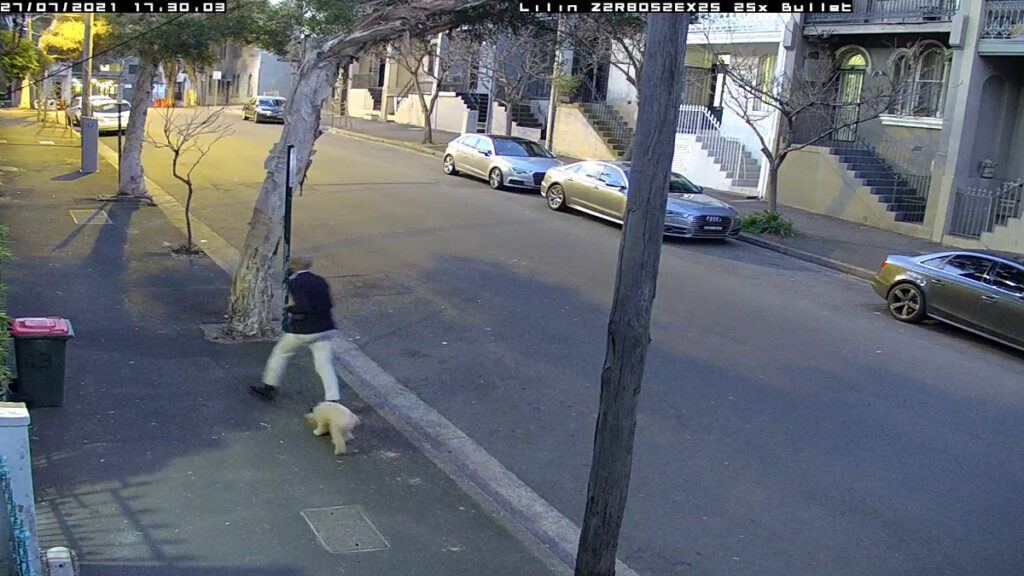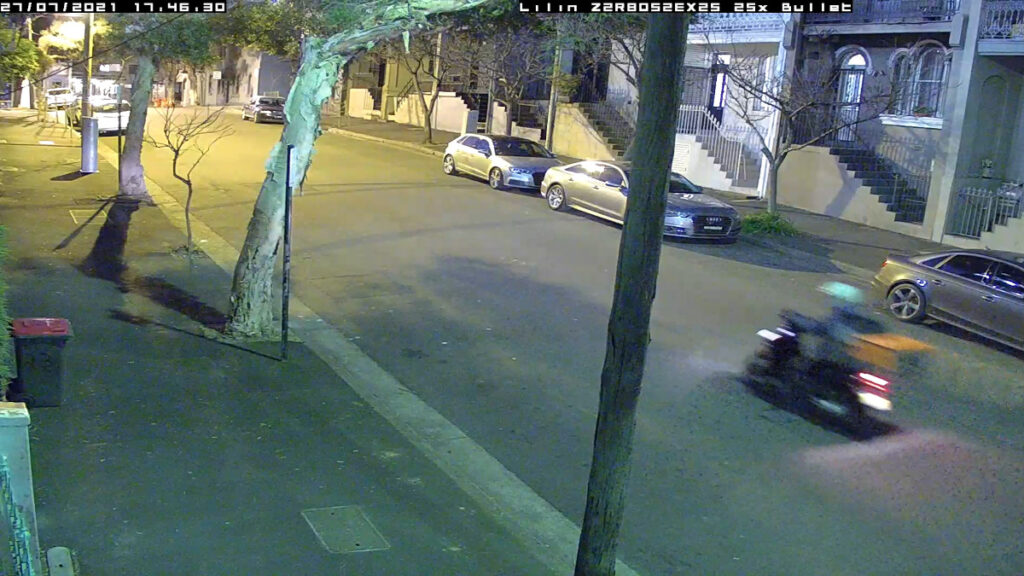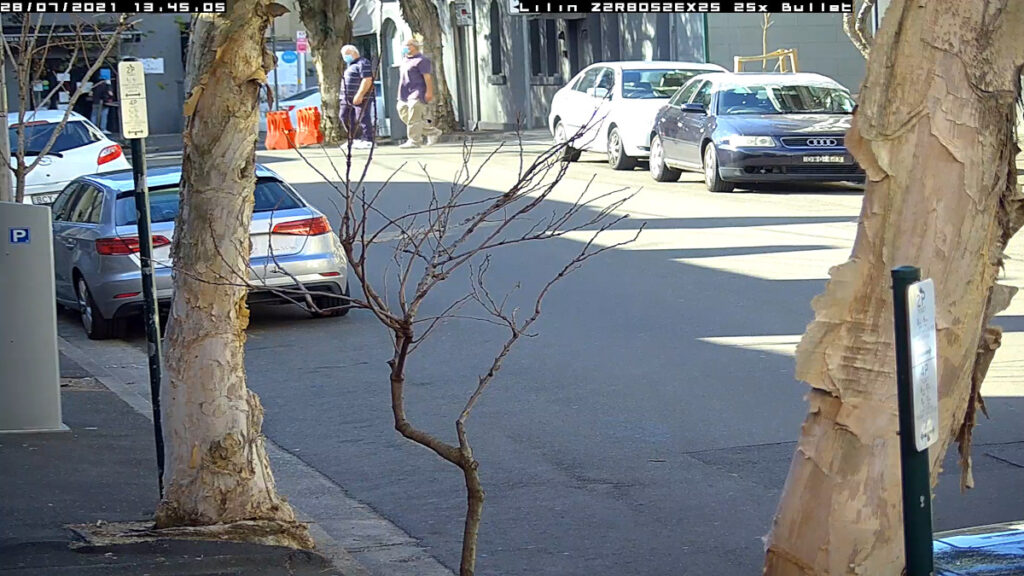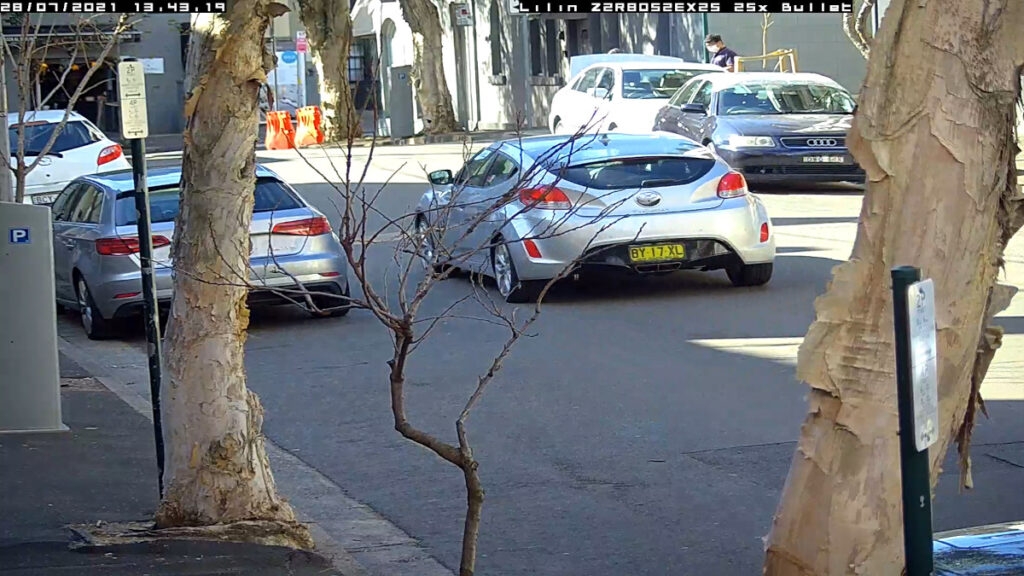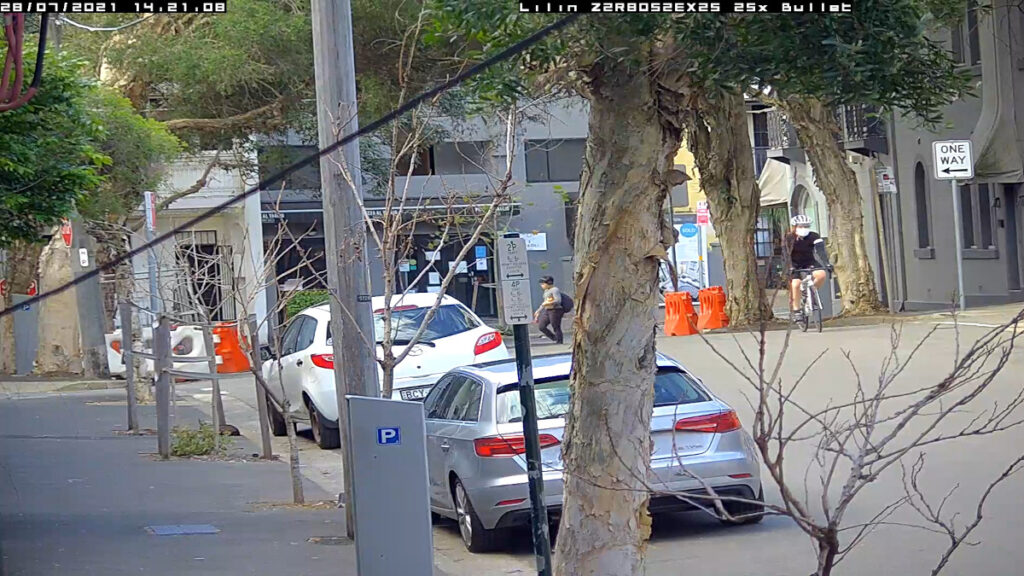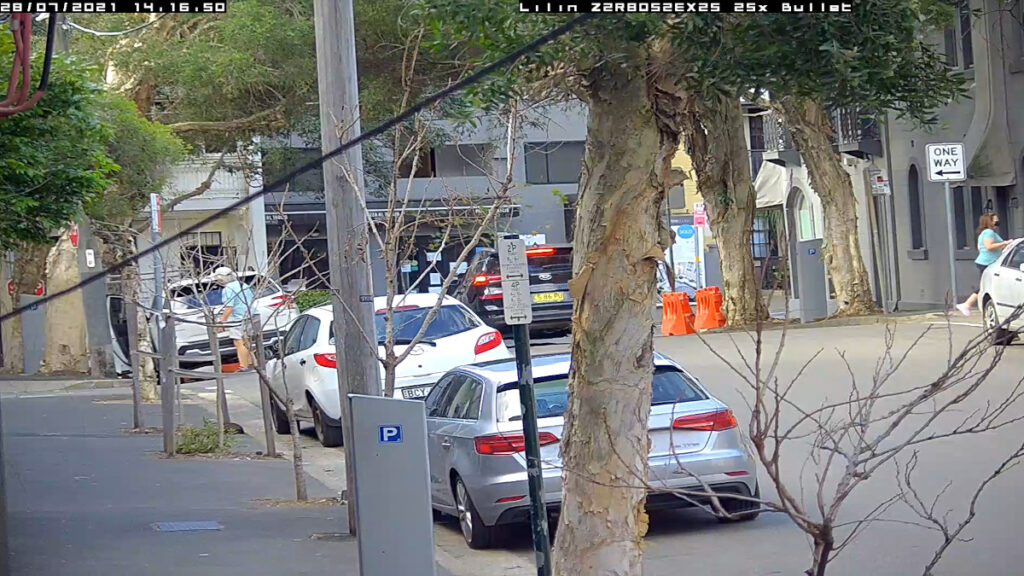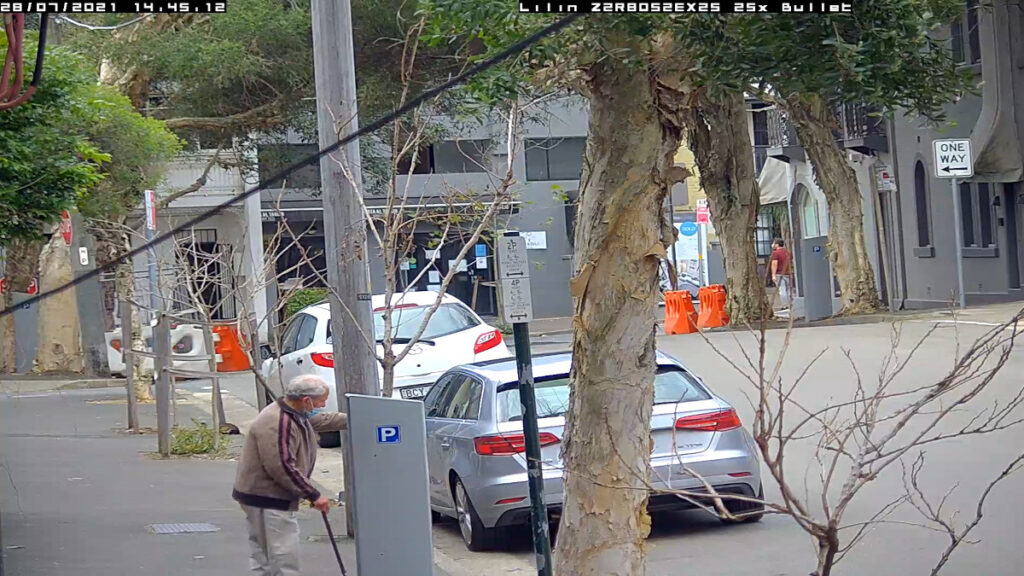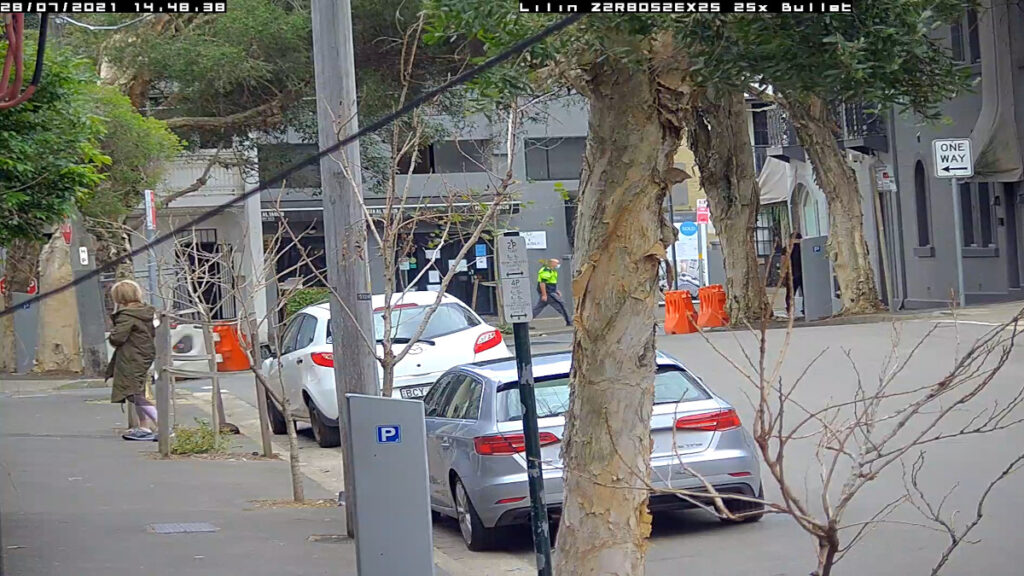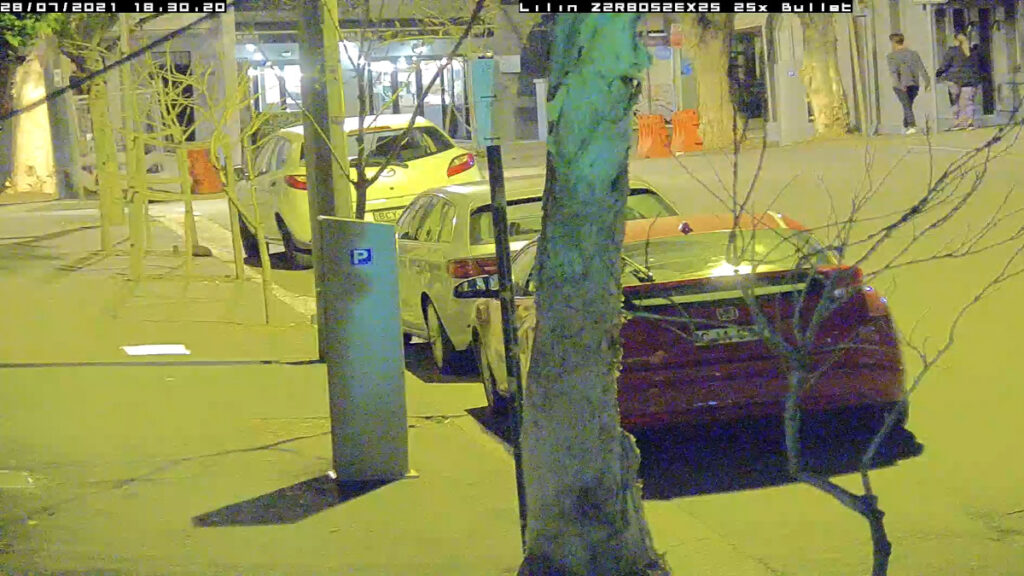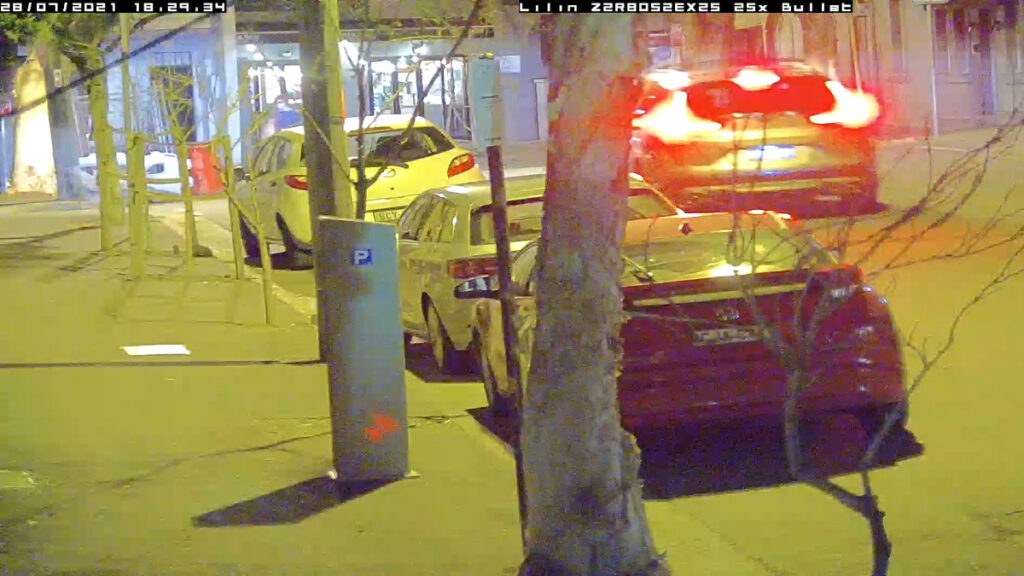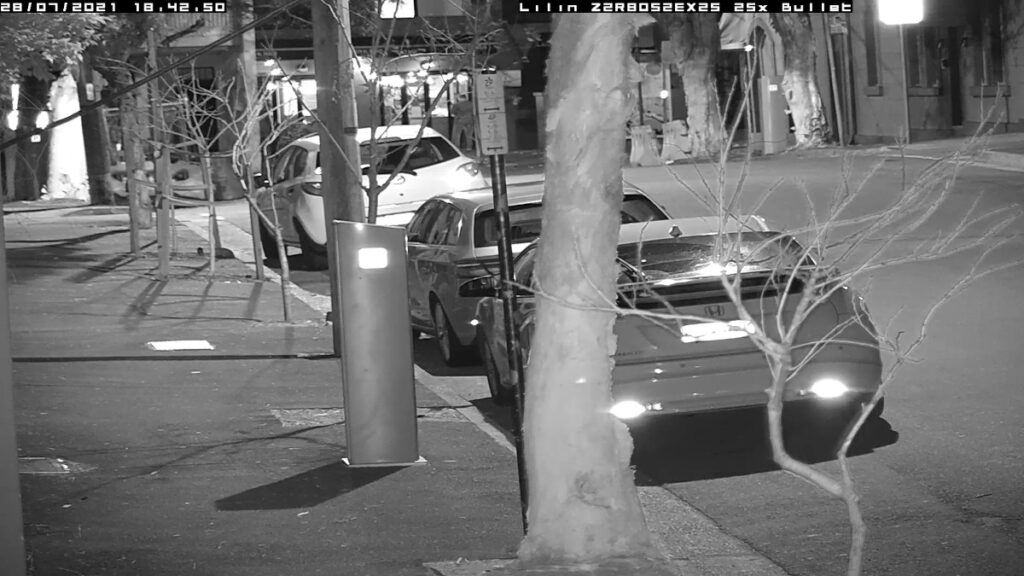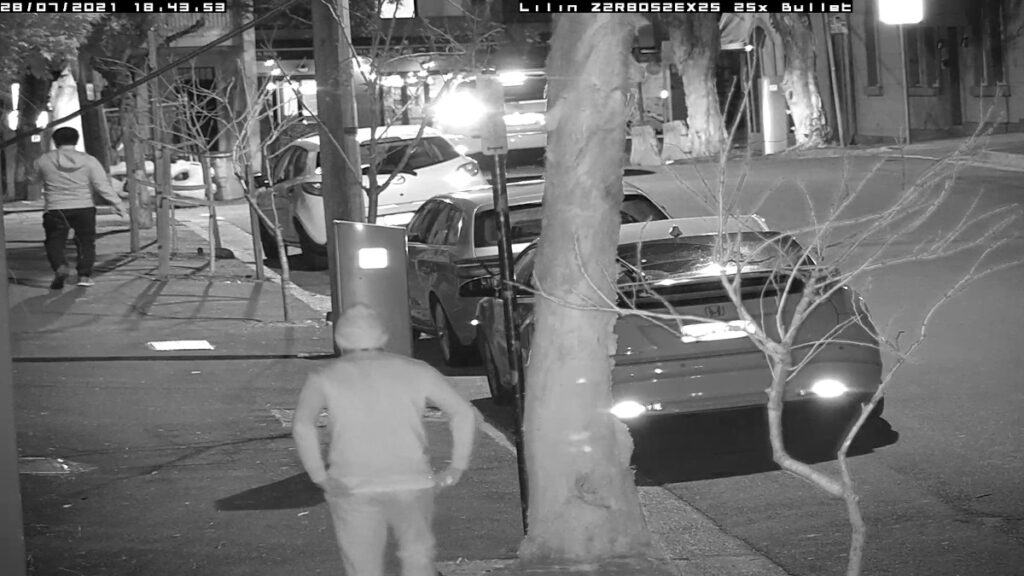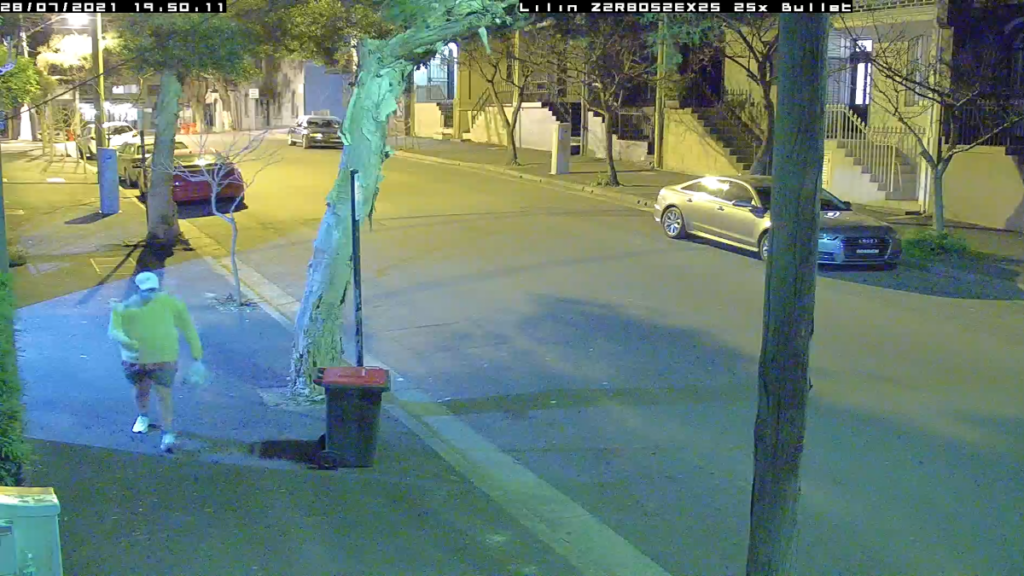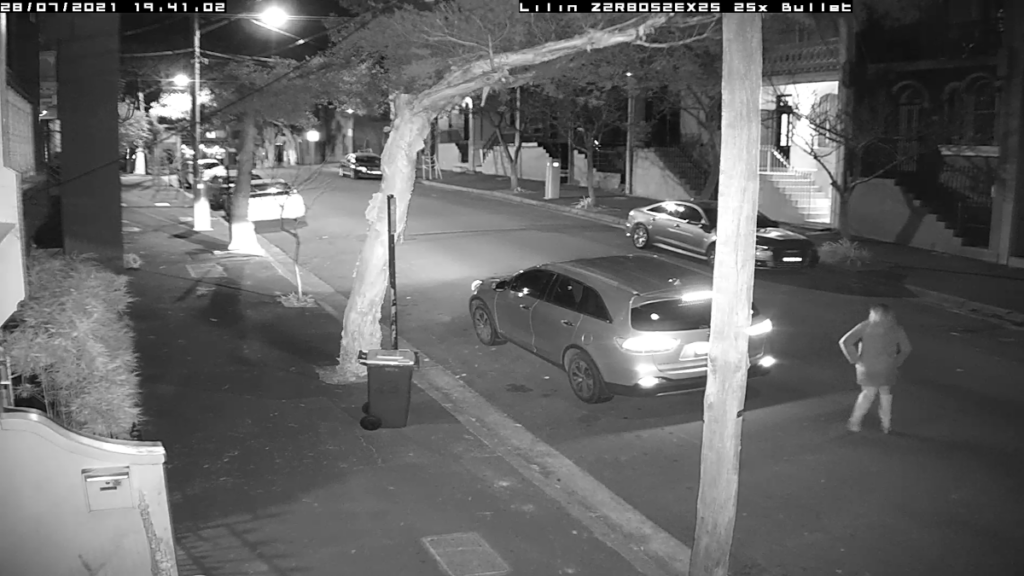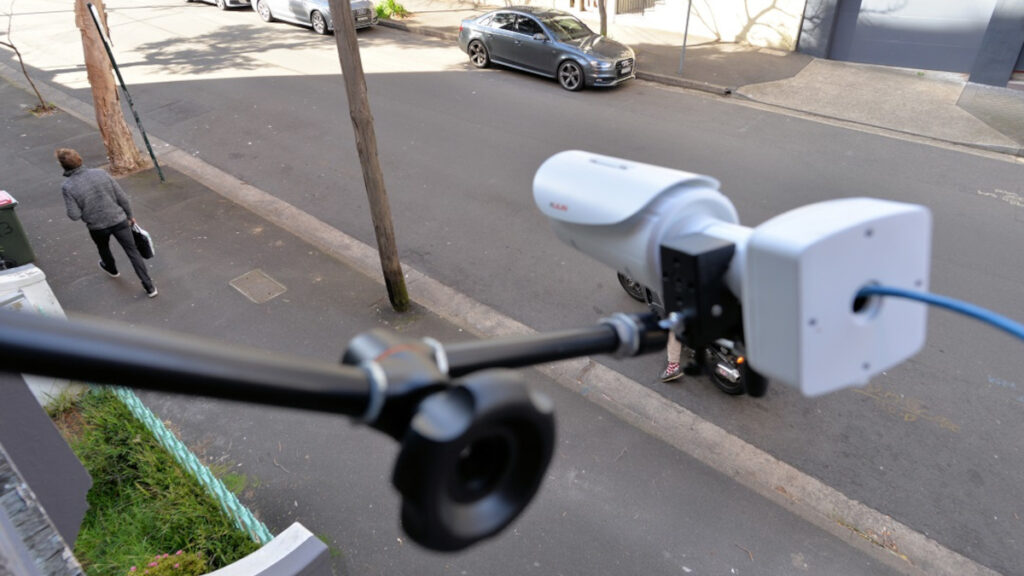LiLin Z2R8052EX25 25x Bullet Camera Review
Contents
LiLin Z2R8052EX25 25x zoom bullet camera features IK10 vandal and IP67 weather and dust resistance, 5MP resolution, super low light performance, H.264 and H.265 compression, IVA and 100dB of HDR. But what defines this package is its monster focal length – from 5.3 to 130mm – supported by infrared range of up to 100m. In our street application, Lilin’s 25x long end blows the competition completely away.
This month’s test is the first time we’ve got our hands on a Lilin bullet camera for nearly 10 years. Casting our minds back we can say the technology has changed but the recipe has stayed the same. This Lilin Z2R8052EX25 25x day/night bullet camera, featuring IP67 and IK10 ratings, is a long-range bomber, same as its predecessor, and for end users needing serious reach there’s a lot to love here.
The camera features a progressive scan 1/2.8-inch CMOS image sensor delivering a resolution of 5MP (2616 x 1964 pixels) at 25ips, sees the world through a 5.3–130mm autofocus zoom lens with an aperture that’s F1.6 at wide end and F4.3 at the long end and gives an angle of view that’s 55 degrees at full wide and 2.3 degrees at the long end. Supporting that epic distortion corrected zoom is a smart 100 metre IR array.
Video streaming options include RTP/HTTP, RTP/TCP, RTP/UDP, and multicast, with 4 configurable streams in H.265 and H.264 and motion JPEG, supported by configurable frame rate and bandwidth with bit rates running from 128Kbps–12Mbps and frame rate and bit rate settable via VBR/CBR/GOP, with fixed bitrate and simultaneous Smart H.264/H.265 compression capability. When it comes to image effects, you can tweak brightness, contrast, hue, saturation, sharpness, mirror, flip and rotation.
Other features include white balance options include ATW-narrow, ATW-wide and AWC manual, 3D noise reduction, 2D WDR, 4 zones of privacy masking and Sense Up capabilities. Along with strong wide dynamic range, there’s also 2-way audio, support for video analytics, and easy integration with third party video management systems, home automation integration and NDAA compliance.
There’s digital PTZ support, IVS, tampering/audio/alarm/motion/network lost detection event functions, digital I/Os, ONVIF Profile S support, 60dB variable AGC, an electrical shutter with 1/25s – 1/30000s settings, 2-way audio with G.711 u-law/PCM/AAC compressions, along with SIP (external microphone required) and an audio I/O.
Networking protocols supported include IPv4, IPv6, TCP, UDP, HTTP, HTTPS, SMTP, SIP, MQTT, QoS, SNMP V1/V2/V3, SNMP Trap and heartbeat, NTP, DDNS, UPnP, FTP, ARP, DHCP, PPPoE, DNS, RTSP, RTCP, Telnet, ICMP, IGMP, ONVIF Profile S, SDDP, Bonjour , 802.1x, there’s support for 10 simultaneous users with password protection, and Base64 HTTP and HTTPS encryption. There’s also digest HTTP authentication, RTSP authentication, TLS, 802.1x, and DDNS via HTTPS.
Power consumption at 12 V DC is 12W, including to 14W using PoE+ (we use this option), operating temperature is from -40C to 50C, camera dimensions are 372mm long, 116 wide and 112mm high, while weight is 1800g. The camera supports microSD/SDHC/SDXC cards to 128GB for circular recording. Something it’s worth pointing out is that this is a beautifully built camera with great hand feel. The robust cast alloy housing is a little larger than typical bullets in order to house that big lens, but a bit of extra size is no issue considering the huge optical power it gives you.
Test Driving LiLin Z2R8052EX25 25x Bullet Camera
We are running the camera on SEN’s test network, supported by a Ubiquiti PoE+ switch, viewed on a Benq LED monitor and driven on a Dell Optiplex 9020 server. I can see the camera lens has a magnesium fluoride coating on at least the front element, which is designed to handle wavelengths around 550nm.
We start out in a daytime scene at the wide end of the 5.3-130mm range. There’s bright variable light in this scene and without wide dynamic range activated, there’s deep shadow on the near side of the road. The camera doesn’t show any signs of overexposure on the bright side. Something that is immediately apparent are widespread chromatic aberrations – purple fringing – both longitudinal and latitudinal. These are to be expected at the wide end of a lens this long. I notice no pronounced barrel distortion – this is probably due to the slightly longer wide end.
My first move, given the darkness on the near side of the street, is to activate wide dynamic range. Once I’ve done that, I can settle down and enjoy the image stream. Something I notice, even with WDR activated and leveling out colour and contrast, is that the colour tones are very true. The greens perhaps a little oversaturated, but the silvers, greys, browns, beiges – all these are very subtle handled at the wide end of this lens.
Something else is that while there’s plenty of detail from edge to edge, deeper into the scene at the wide end there’s slight blur – it’s not pixel spread – it’s as if those parts of the scene are outside the focal plane at F1.6.
Deeper in at the wide end – about 22m – I have good skin tones and plenty of detail of pedestrians, including details like running shoe type. The colour of shoelaces, the design of carried bags. I can even see access control credentials that are hanging around the necks of workers walking by. As soon as I start rolling in the zoom. the performance of the camera changes. Suddenly I have fast-moving plates in high resolution and fine details deeper into the scene. It’s a bit like a tele-lens at F32 on a bright day – everything seems in focus.
Backing out again, I’m easily able to capture moving number plates at a focal length of around 6-6.5mm. I’m also able to get good detail of pedestrians at 70 metres from the lens. However, I notice there’s evidence of spherochromaticism deeper in at the wider angles of view. which certainly comes down to the very long lens, and the relatively fast aperture. Typically, long lenses do better when stopped down.
At this 6.5mm focal length, I still have widespread spread chromatic aberration. But that doesn’t stop me getting considerable detail of activity on the street. This lens with its slightly long wide end congregates the 5MP of resolution in a way that delivers large amounts of detail, including everything from dog collars and patterns on leashes, to hats and bags. As the test goes along, I find this quality is enhanced by zooming.
On the topic of zooming, I creep in a bit further. I haven’t adjusted the camera’s, angle or tilt, and this means I’m shifting the field of view towards the road surface, but I immediately see that the congregation of pixels allows me to snare the number plates of fast-moving traffic. By now I am at around 8.5mm and I’m getting a great deal of detail of pedestrians and vehicles to the point of being able to view newspapers in the hands of the passengers in taxis and to see specific scuff marks on carried baggage.
As light levels fall – it’s now about 5.20pm – shutter speed slows down. Because I’m still at slightly longer than wide, the aperture is stopped down a little and that’s having an impact, too. I’m not getting the plates of motorcycles going by, but we are well under 10 Lux at the lens. Regardless, the image stream appears surprisingly bright on my monitor. At this focal length I don’t have court admissible face recognition, but I do have identifiable faces, and there’s no doubt that a friend or colleague would be able to identify a subject from these image streams.
As evening wears on, colour tone from the low-pressure sodium lights at the far end of the street start to make an impact. But closer to the lens. I still have the cooler tones of LED. I don’t have face recognition, but I have a lot of other detail. Clothing colour, hair colour shoe style, the presence of pets and their colour and even hair style – it’s Surry Hills in 2021 after all.
Motion Blur
When it comes to fast moving motorcycles at 5.45pm there’s the intrusion of tone mapping and tails, suggesting shutter speed has dropped down to the 1/30th of a second minimum settings. Even without plates, I do have the overall style of the machine, the colour of helmets, the colour of panniers or stowage boxes. The same goes for faces at this widish angle. I also notice some noise pushing through in colour mode in areas of movement, suggesting amplification of region of movement. I still have clothing colour, the colour of the straps of bags, hair colour, and general details of attire.
Next day, I adjust the camera angle to give me a better long view. And as soon as I reel the camera in halfway, maybe 15-18mm, I’m surprised by the awesome performance of this lens, the chromatic aberrations have disappeared, pixels have congregated. I can see high levels of detail from about 25m through to 100m. The compression characteristics of a lens this long are excellent. Despite the compression, I can readily discern the associations between people.
I can see the staff inside the pizza restaurant on the far side of Albion Street. There’s no vehicle that passes into my angle of view whose number plate I’m unable to capture, while strolling pedestrians and office workers are easily identifiable.
Performance at this long focal length is much superior to the performance I was getting at the wider angle – depth of field is better, too. Face recognition 70-80m from the lens is court admissible and there’s excellent detail of carried accessories, bicycles, the guff in the back of utes. There’s somewhat less, but still very strong, details of pedestrians on the far side of Albion Street – that’s 110 metres from the lens. I’ve never had a view as good as this is, never had this sort of reach from a bullet camera. Looking at these images you wouldn’t think the camera was hanging on SEN’s same old balcony.
Now, I tweak the angle a little to the left and lift the camera slightly to get the best possible view at the longest possible zoom. Back at my workstation, I’ve succeeded in my goal, but the angle of view presents as a very congested street scene. At this point it occurs to me the camera’s performance is going to be limited on full zoom by the largest object in this cluttered field of view – a street sign or the trunk of a paperbark tree.
Face Recognition Performance
Regardless, at this focal length, the intersection of Albion Lane and Albion Street is rendered in extremely high detail with almost nothing unwanted in the scene. Number plates could not be easier, details of every kind are ready to hand. I have very nearly got court admissible face recognition on the far side of Albion Street. The level of detail past 80m from the lens is unprecedented. Now, I go in the whole way on the zoom and, as I thought, the camera focuses on a sign and a tree in the foreground.
This focal point renders the deeper parts less focused that they were, but that’s a characteristic of long lenses. Performance at the extreme edge of the focal range would be better in a less cluttered environment and I wind the camera back into the high teens. The result is a very pleasing view 80 metres from the lens. Colour rendition, sharpness, tone – all these key contributors to detail are excellent. I even have detail of the shapes of leaves on the far side of Albion St.
Long-range performance
Given the afternoon is wearing on, something I start to wonder whether or not this excellent long-range performance is going to be attainable as light levels fall further still. It’s now 6.29pm and I have left the camera at a long focal length to watch the evening unfold. The image is showing the yellow colour cast generated by the sodium streetlights at the far end of the street.
However, levels of detail remain high. I have no plates, but the make, model and colour of vehicles are discernible, and I have plates if parked. Most interestingly, I can still see all the way across Albion Street and into the restaurant on the far side. That’s a distance of more than 110 metres.
A person runs across the field of view, and although they are rendered with significant blur, I can see they are wearing gym shoes with white soles, that the subject is a woman wearing a skirt and leggings, that she’s carrying a cloth bag, that she has a mask, or muffler around her lower face, that her hair is blonde or light grey, that she’s wearing a dark coat with a white fur or fake fur collar. Behind her, perhaps 20 metres away, a man with grey hair wearing a leather jacket and a dark top and carrying a white bag is crossing the road in the opposite direction wearing spectacles.
IR Performance
My next move is to switch over into night mode. And if anything, the performance of the camera goes up a notch – more sharpness from the edges, good handling of greyscale. I have IR on – remember, it’s 100 meters of IR – and yes, this camera has 100 meters of IR range – at least. I have IR reflections from reflectors all the way across Albion Street. Most interesting is the sharpness and tonal detail through the scene and across the lens from edge to edge that I have in monochrome. The depth of field is very strong. The compression is still valuable too.
In this scene, although distances are being compressed in a way that requires a discerning eye, I am viewing from 25 metres to 110 metres in a single view. Throughout, I have faces and high levels of detail. In front of the restaurant, I can see a chap picking up his pizza order. Cars can be identified by make model and colour though number plates can’t be discerned, but the levels of detail when it comes to clothing are simply excellent, especially in the live view. The shoe details.
The clothing details and hair colour, skin tone, and the ability to generally ascertain whether the person is carrying any items or is with another person. While this is not admissible ID, it supports the views of other cameras used in an investigation.
Next, I wind the camera back out to full wide and, once the autofocus has done its thing, I get a sense of night performance across the scene at the wide end. I have make, model and colour of vehicles and good detail of pedestrians, but the quality of the images at the wide end isn’t in quite the same class as the long end. This applies equally in colour. At the wide end there’s a little bit more noise in colour. I can also still see that slight aberration at the wide end further into the scene, which must relate to the nature of the lens equation of this very long lens. Regardless, I still have solid situational awareness.
Conclusion
Lilin’s Z2R8052EX25 25x bullet is an excellent surveillance camera from an experienced manufacturer. Its performance is solid, day or night, and it’s fabulous once you start zooming in. From around 8mm, quality steps up markedly, and deeper into the zoom range things really start to hop.
The camera’s extraordinary long-range performance in colour in sub-4 lux is not what I was expecting. It’s exceptional. This is the bullet camera for users requiring serious reach on the street or in larger industrial or government applications – it’s simply a must see and SEN rates it highly recommended.
More details about Lilin’s Z2R8052EX25 25x Specifications and features here and you can read more SEN news here.
“Lilin’s Z2R8052EX25 25x bullet is an excellent surveillance camera from an experienced manufacturer. Its performance is solid, day or night, and it’s fabulous once you start zooming in”.




